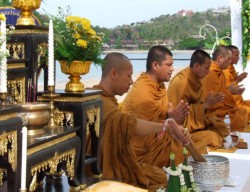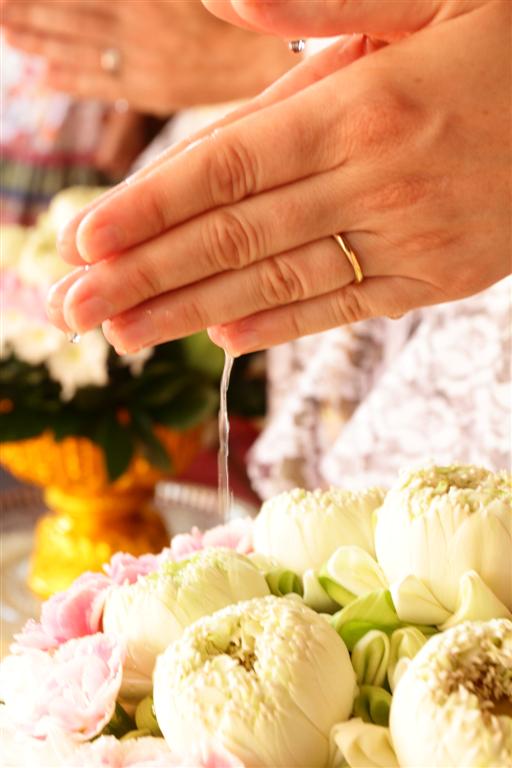Consider Having a Traditional Thai Wedding
For your destination wedding in Thailand, add colour and meaning to your big day with a traditional Thai wedding ceremony. We will work with your resort or venue operator to arrange this option, with or without the chanting of Buddhist monks. Below is a summary of what a traditional Thai wedding entails.
First, the bride and groom would wear traditional Thai costumes, which can be rented or tailored to your specifications. There are a range of dresses for women; keep in mind that more elaborate pieces will take time to make and require more than one fitting. For men, the wedding outfit is fairly simple, consisting of a mandarin collared jacket and matching trousers or traditional ‘jong kraben’ pants. You can make clothing arrangements in Bangkok when you pass through to register your marriage or we can help facilitate the process beforehand.
On the morning of your wedding day, the groom and his family and friends would begin by walking to the wedding venue (traditionally, the home of the bride) in the ‘khan maak’ procession. They will carry trays bearing the dowry or ‘sin sod’, consisting of cash, jewellery and more traditional items, such as special Thai sweets, young banana trees and sugar cane shoots. This practice is akin to an engagement and it is commonly done on the same day as the wedding. It’s steeped in symbolism, demonstrating that the groom is financially stable, and the dowry is usually returned to the couple after the wedding as a gift.
In each doorway or gate en route to where the wedding will take place, the bride’s family or friends will block the groom’s path with gold and silver chains (the kind you wear around your neck). The groom will have to present these gatekeepers with cash in order to pass through each barrier, assuring them that he will care for the bride. While these rituals are meant to be more playful than flashy, they are not mandatory if you feel uncomfortable with such displays.
When the groom and his party are settled, they present the dowry to the bride’s family. The bride enters and rings can be exchanged. The couple will then kneel together, with hands pressed together on a raised table in a prayer format or ‘wai’, while a holy string is strung in a circular motion around their heads to represent the linking of their destinies. The bride’s mother dots sacred powder markings on the couple’s foreheads and slips flower garlands around their necks. Both sets of parents (or elders) then pour water from an ornate conch shell, a Brahmin symbol of purification, over the couple’s hands while saying a blessing.
This beautiful practice, called ‘rod nam sang’, signifies cleansing and good luck. All adult guests will be invited to participate. Once everyone has had a turn, the wedding officiator removes the sacred cord and the couple is free to mingle with their guests. You will be done with plenty of time to prepare for evening program, including your formal vows and reception.
While the above is a simplified version of a Thai wedding ceremony, it certainly captures the heartfelt feelings surrounding a wedding that, regardless of your cultural or religious background, will enhance the beginning of your new life journey. For more information please contact us



